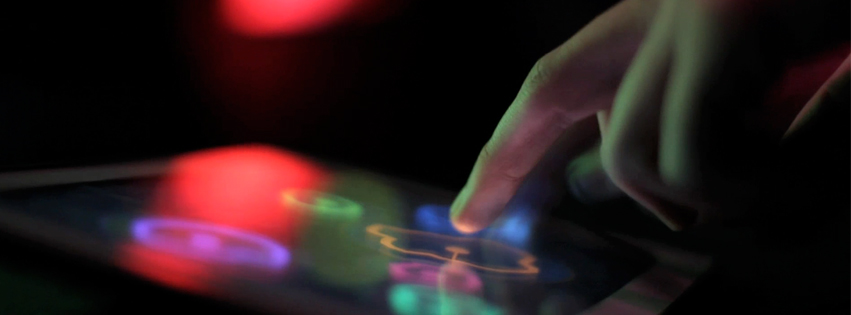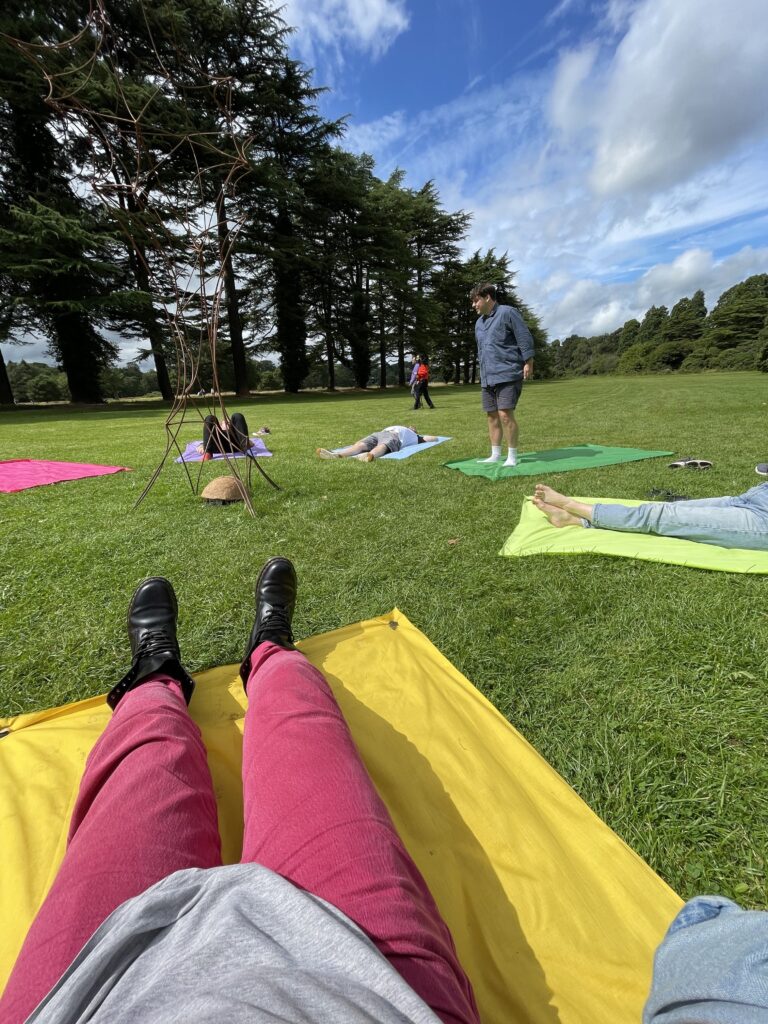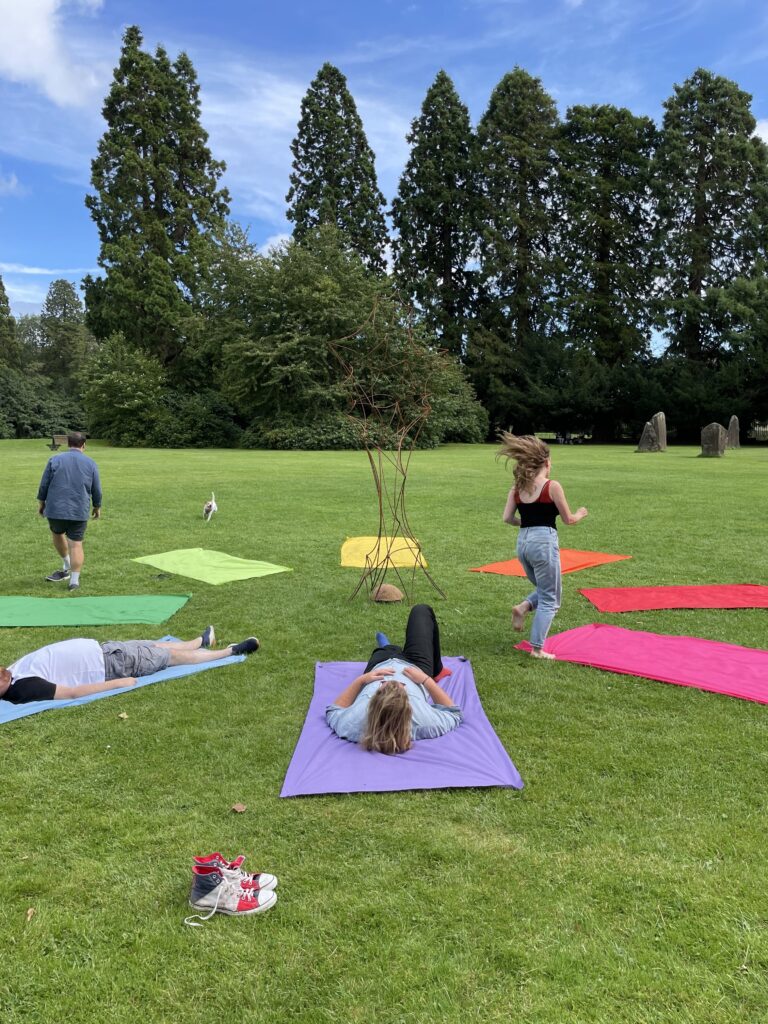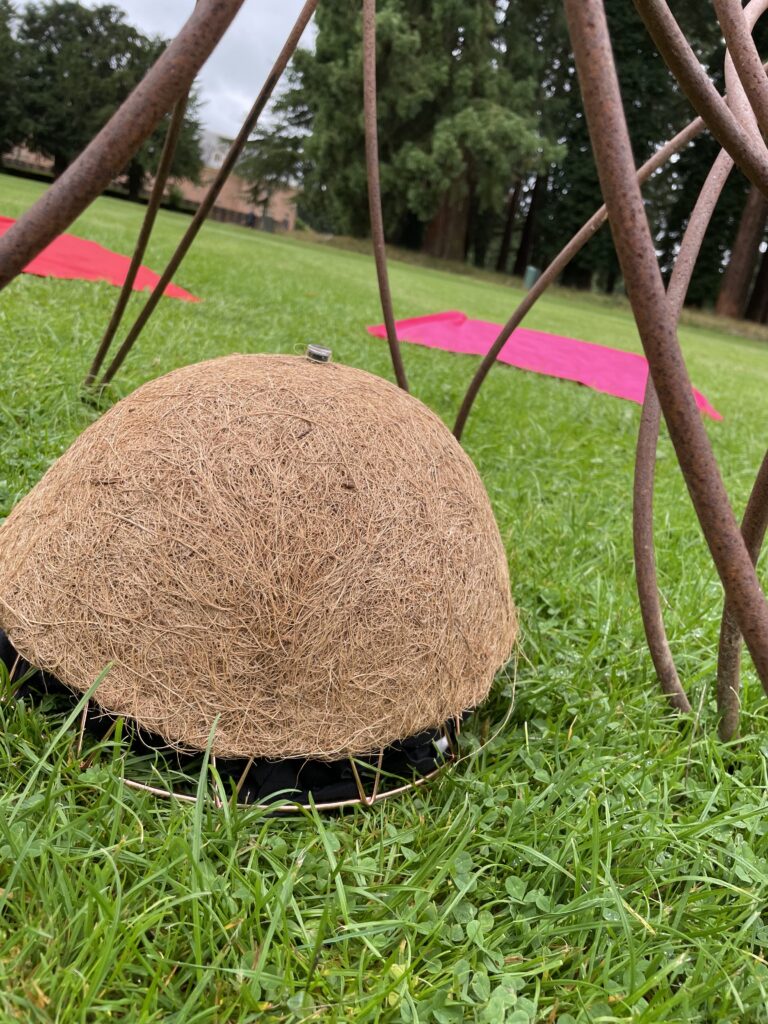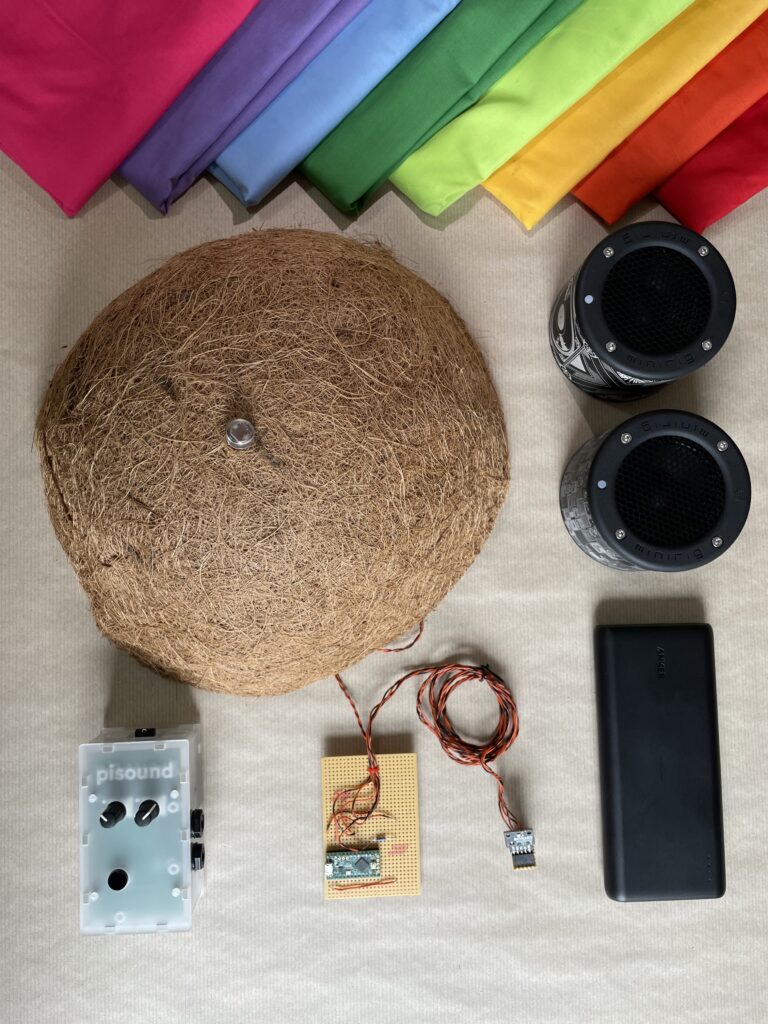As creators, we are used to sharing our experiences through sounds we make and produce. It is a language we all understand very well. No surprise, our community members from pyka (Wales, United Kingdom) have decided to unite people from different backgrounds by using no other but sound. Today we talk with one of the founders of pyka, Leigh Davies, who is ready to share their creative journey with us. So if you are keen on finding out more about pyka’s productions, their work ethics, and views on creativity, we invite you to jump on and get lost in the wise words of pyka creators.

Please tell us more about the beginning of pyka. When and why did you decide to create it?
So… pyka was formally founded back in 2015, which brought together a small team of multidisciplinary creatives who were incredibly passionate about sound!
As a collective, we deeply believe in the power that sound has as a ‘world builder’. So, as experience designers and producers, we create digital artefacts and installations that enable people to explore those worlds. We’ve designed and delivered experiences across a wide range of contexts from Arts and Culture, Entertainment, Heritage, Environmental, Health and Wellbeing, and many more.
Right from the very beginning, our creative projects were deeply grounded in the philosophy of Design Thinking – in that everything we create is made possible through a process of co-creation in direct partnership with our audiences. All of our experiences, artefacts, digital platforms, and tools were conceived, prototyped, tested, and created in this way.
As the scale and frequency of our project work grew over time, we also began to fold our way of working as a production team into the world of education. We developed a number of learning programmes and engagement workshops that drew down on our methodologies as industry experts and aligned these with opportunities for learning and development within schools and other educational environments – within Wales and beyond.
One of the biggest challenges we’ve experienced as an organisation was to better understand the needs of the people and organisations that we wanted to work with. Our partnerships are forged outside of our specific bubble within the arts, so making an effort to understanding the needs of organisations that sit outside of our own context is what has made it possible for us to deliver unexpected projects in unlikely places – from engaging at-risk groups in the Welsh valleys in sound app design, to creating digital orchestra installations for individuals with complex needs.

You have created numerous projects throughout the years. Could you please introduce us to some of your productions?
Each of our productions differ and vary greatly because we approach the concept design for each of our experiences on a case by case basis. Our work is consistently responsive as it is usually tailored to fulfil a brief or rationale, to engage people in a theme, or to solve a problem for someone. Because of this, our portfolio of projects is very diverse, but the thread that connects them all together is sound: we’ve developed black box gallery installations that enable people to record and remix a live string quartet. We’ve developed outdoors site-specific sound experiences that are directly controlled by the weather. We’ve even created technologies and toolkits that enable communities to transform old objects and waste materials into unusual digital musical instruments.
What we love about our working process is that it isn’t bound to platforms or resources. Over the years, we’ve worked very hard to uncover ways in which digital sound experiences can exist beyond the spaces in which you most expect them – and because of this, we now specialise in making immersive and engaging sound experiences that (so far!) can exist anywhere.
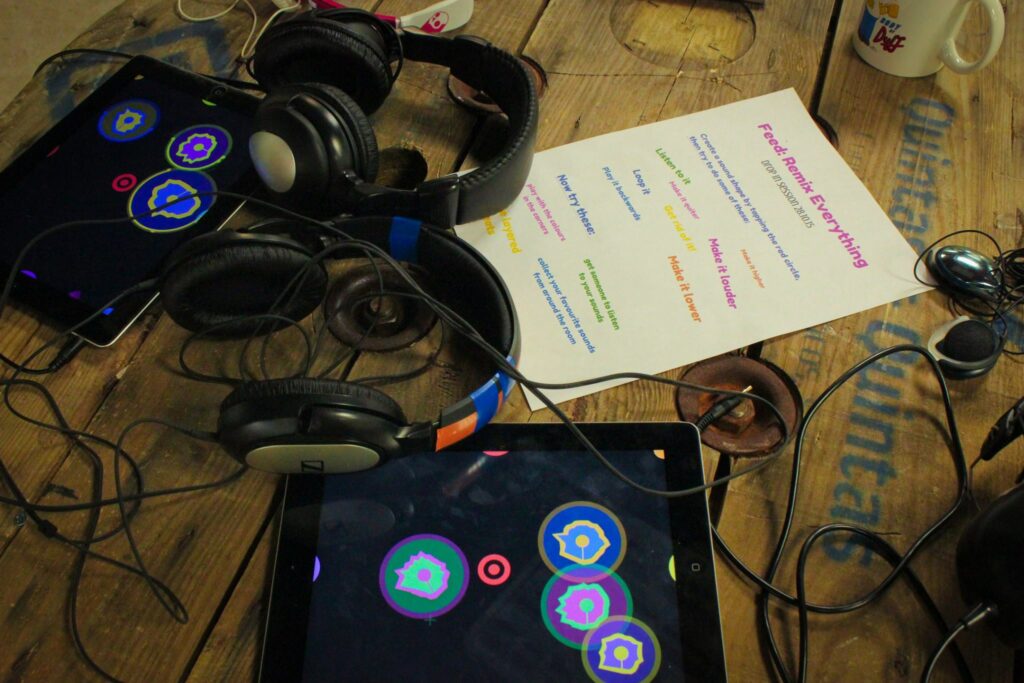
You have created projects for schools and worked towards the improvement of education in Wales. Why would you say it is important to teach kids about sound and creativity?
Our sister company, pyka_education, uses sound and creativity as a vehicle for learning rather than a focused or isolated subject matter. Very much in line with our core philosophy as a production company – we believe that sound and wider creativity is a fantastic tool or vehicle to explore ‘something else’. So… specifically within the context of education, we believe sound and creativity are important for young learners – not so much as a subject matter in the traditional sense – but more as a tool to explore ideas, emotions, themes, problems, questions, and so on.
Because of this, our facilitators have been able to use many of our sonic platforms and tools to deliver educational programmes and engagements that have helped young learners uncover the power of storytelling, decode the numbers behind music, uncover the science behind sound, explore history and culture, investigate sustainability and ethics, and even come face-to-face with themselves as individuals.
Ultimately this is the thread that runs through both strands of our organisation – sound is the great enabler for us – it has helped us develop powerful and immersive experiences for people to explore, and it has also helped us to stimulate a deeper desire for learning.
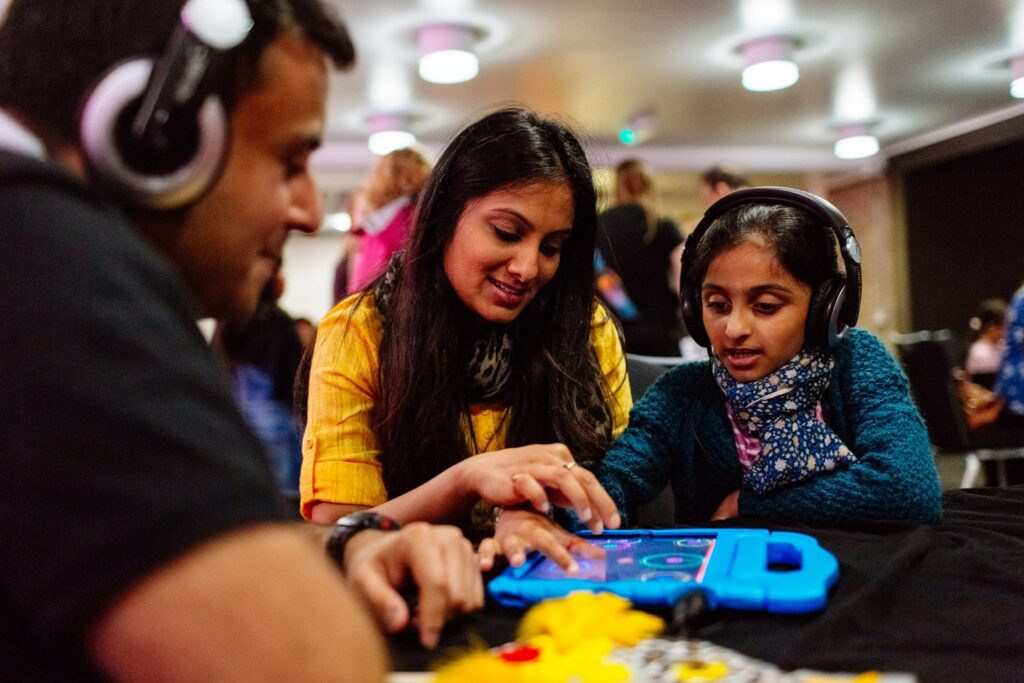
Why did you feel it was important to work with people with disabilities, at-risk, in remote or disadvantaged communities?
Simply put, we believe that everyone should have access to meaningful creative opportunities and experiences – and because of this, accessibility has consistently been at the heart of our projects. One of the reasons we develop ‘platform-neutral’ work (i.e. work that can exist in multiple forms and in multiple spaces/places) is so that we can form it and shape it and allow it to respond to the environment it needs to exist within, and respond to the needs of those who occupy that environment.
Through our pursuit to explore and support accessibility within our work, we’ve learnt that no two people experience something in the same way… and the implications of this have had a massive impact on the direction and configuration of our work. Wherever we can, we aim to ensure that our experiences and our artefacts offer up more than one ‘channel’ through which someone can engage with the experience or interpret something.
This is one of the key reasons we consider our practice to be about world-building. A world is a complex concept – as a descriptor, it is usually formed of a multitude of experience channels – and it is this breadth that makes it increasingly easier to include as many people as possible in the systems of experience; creative multimodality is key in increasing people’s access to experience – it is about breadth.
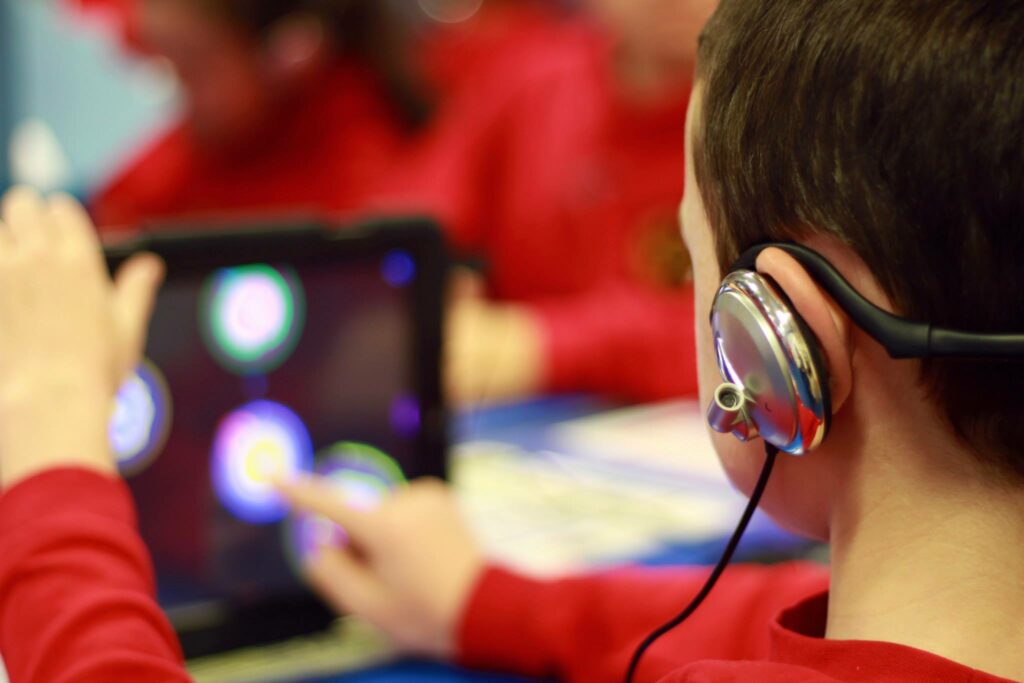
Could you please tell us more about The Sky Vane project? How did you come up with this idea?
The Sky Vane is our latest sound installation at pyka. Commission by Tin Shed Theatre Company and Our Living Levels for the Big Skies 2021 event in South Wales, UK – The Sky Vane provides people with the opportunity to enjoy a sky-driven reactive sound experience – as they simply lay down amongst the grass, take a breath, look up to the sky, and listen.
At the centre of The Sky Vane experience sits a beautiful structure that is powered by the Pisound and features an array of atmospheric sensors. These sensors detect changes in light, temperature, pressure, and humidity in order to create a dynamic sky-gazing soundtrack that evolves and changes throughout the day.
When we set out on the creation of The Sky Vane, we were faced with one of our first site-specific, public-facing design challenges since the restrictions of the pandemic originally took hold. We wanted to be very mindful of the levels of anxiety that people were expressing and experiencing when faced with the prospect of reconnecting, once again, with public activities and events. Responding sympathetically to this, we were really interested in creating a space that promoted quiet contemplation, relaxation, and mindfulness – and with a pinch of technological magic – find a way for our surroundings and our environment to be the sculptor and the architect of that experience for everyone to enjoy.
Why did you decide to include Pisound in the brain of your The Sky Vane experience, and what do you like about it the most?
Over the years, we’ve identified the raw ingredients and tools that are indispensable to us as we design and assemble the systems that sit at the centre of our experiences. The Pisound has been an incredible resource for us in ensuring we’re able to work with high-quality audio inputs and outputs in some of the most remote and ‘disconnected’ places. It’s not only a very powerful piece of hardware but also very easy to integrate with the microcomputers and microprocessors that we consistently utilise within our work. What can we say – we’re very big fans!.. and with this tech, we believe we can take our interactive sound experiences to even more remote and often overlooked places and reconnect people with their surroundings in new and more ambitious ways.
Could you please share your experience of working with galleries and other cultural partners? Any tips for beginning artists who would like to follow your path?
Oh yes, absolutely! Our work has taken us on some wonderful journeys, and we’ve made some fantastic friendships along the way – with all kinds of people and organisations such as Tate, The Roundhouse, Wellcome Collection, London Symphony Orchestra, Shakespeare’s Globe, Cadw, National Trust, Wales Millennium Centre, Chester Zoo, Dr Jenner’s House – and the list well and truly goes on!
The most important piece of advice I can give to other creatives who are interested in pursuing similar avenues is to spend some time understanding the deeper, wider value of your craft from the perspective of other people and organisations. A lot of people within the creative industries discover their love of their craft within a specific context or setting, and as a result of that – can remain somewhat ‘stuck’ in that setting, or scenario… and this can be such a shame, because someone’s skill or craft is valuable in more places and contexts than they may realise. So taking some time to properly explore how your artistic skill can be valuable to others is one of the most important things you can do in order to work with the people or organisations you want to work with. Doing this will make it easier for you to show them how you can be valuable to their cause.
Any exciting new projects coming our way? Please share them with us!
There is an awful lot going on at pyka currently! We have a number of large-scale installation productions about to kick off in the coming months – through many of which we will be expanding upon our current approach to outdoors digital sound installation design. After the restrictions of the global pandemic, we’re really keen to double down on the prospect of moving digital sound experiences beyond the touchscreen and the pixel and take them even further into the great outdoors. We’ll be sure to keep you updated on all of our upcoming endeavours and the role that Pisound will undoubtedly continue to play within this!
Also, we’re about to launch a MAJOR update for one of the first sound tools we ever created – pyka_loop – in the coming weeks. pyka_loop is an app that provides people with a unique way to explore and interact with sound. For the first time in its history, it will be made available across all iOS devices completely free of charge in celebration of 10 years of _loop on the App Store (…yes! as a tool, it actually pre-dates the founding year for pyka.) In fact, the creation of pyka_loop V1 in 2012 is what originally brought our founding team members together for the first time – and in true pyka fashion, in the most unlikeliest of place – sat cross-legged in a circle inside an abandoned iron furnace at the Blaenavon Ironworks heritage site.
